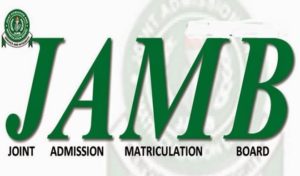Jamb mathematics tutorial: sequences and series
Hi guys. Today we’ll be looking to completely exhaust sequences and series based on jamb mathematics syllabus.
If you feel you need a good textbook instead, see the recommended textbook jamb asked students to read for mathematics.
However, for those who feel they have completely exhausted this topic, click here to see tough questions on sequences and series
Having said all that, let’s proceed.
For the best guide in your studies and mathematics tutorials with videos, visit ogschools.com
1.1 Sequences and series
A set of numbers such as U_{1}, U_{2}, U_{3}, U_{4}, \ldots, U_{n} which are ordered is called a sequence. U_{1} is the first term, U_{2} is the second term, U_{n} is the n_{th} term of the sequence. The following are examples of sequences
1. 1,3,5,7,\ldots,2n-1 (sequence of odd numbers)
2. 2,3,6,8,10,\ldots,2n (sequence of even numbers)
The expression U_{1}+U_{2}+U_{3}+U_{4}+\ldots+U_{n} which can be formed from a sequence is called a series.
1.2 Arithmetic progression (A.P)
An arithmetic progression of A.P is a series of the form: a+(a+d)+(a+2d)+(a+3d)+\ldots where a is the first term and d is called the common difference which may be positive or negative. Each bracket of the A.P is a term and simple progression will give the n_{th} term of the sequence.
U_{n}=a+(n-1)dIf there are n terms in the A.P and S_{n} is their sum, then
S_{n}=[a]+[a+d]+[a+2d]+\ldots+[a+(n-1)d]Reversing the series gives
S_{n}=[a+(n-1)d]+[a+(n-2)d]+[a+(n-3)d]+\ldots+[a]Adding both equations of S_{n}gives
2S_{n}=[2a+(n-1)d]+[2a+(n-1)d]+[2a+(n-1)d]+\ldots+[2a+(n-1)d] \\ 2S_{n}=n[2a+(n-1)d] \\ S_{n}=\frac{n}{2}[2a+(n-1)d]{Sum of n terms of a sequence}
U_{1}= first term =a, U_{n}= last term =a+(n-1)d\\\therefore S_{n}=\frac{n}{2}[U_{1}+U_{n}] {Sum of n terms of a sequence}
1.3 Arithmetic mean
If p,q,r are three consecutive terms of an A.P, then q is called the arithmetic mean of p and r. Since p,q,r are consecutive terms of an A.P, it implies that
q-p=r-q=d \\ q-p=r-q\\2q=r+p\\q=\frac{r+p}{2}The arithmetic mean of two numbers is the average of the two numbers.
Example 1
a. Find the 15_{th} term and the sum of the first 26 terms of the series 21,17,13,9,5,\ldots
b. Calculate the arithmetic mean of -15 and -23
Solution
Given 21,17,13,9,5,\ldots \\ a=21, d=17-21=-4, n=15, U_{15}=?, S_{26}=?
a. i. U_{n}=a+(n-1)d \\U_{15}=21+(15-1)(-4) \\U_{15}=21+(14)(-4)\\U_{15}=21-56\\U_{15}=-35
ii. S_{n}=\frac{n}{2}[2a+(n-1)d]\\S_{26}=\frac{26}{2}[2(21)+(26-1)(-4)]\\S_{26}=13[42+(25)(-4)]\\S_{26}=13[42-100]\\S_{26}=13[-58]\\S_{26}=-754
alternatively,
U_{26}=21+25(-4)\\U_{26}=21-100\\U_{26}=-79\\S_{n}=\frac{n}{2}[U_{1}+U_{n}]\\S_{26}=\frac{26}{2}[21+(-79)]\\S_{26}=13[-58]\\S_{26}=-754b. arithmetic mean =\frac{-15+(-23)}{2}=-19
1.4 Geometric progression (G.P)
A series that is in the form a+ar+ar^2+ar^3+\ldots is called a geometric progression, where a is the first term and r is the common ratio. The n_(th) term is U_{n}=ar^{n-1}.
Let S_{n} be the sum of the n_{th} terms of a series
S_{n}= a+ar+ar^2+ar^3+\ldots+ar^{n-1}multiply through by r
rS_{n}=ar+ar^2+ar^3+\ldots+ar^{n-1}+ar^{n}subtracting $rS_{n}$ from $S_{n}[/latex] gives
(1-r)S-{n}=a-ar^n\\S_{n}=\frac{a(1-r^n)}{1-r} (first equation)
subtracting S_{n} from rS_{n} gives
(r-1)S_{n}=ar^n-a\\S_{n}=\frac{a(r^n-1)}{r-1} (second equation)
Both equations can be used to solve for S_{n}
1.5 Geometric mean
If the number a,b,c are three consecutive terms of a G.P, then b is called the geometric mean of a and c. Since a,b,c are consecutive terms of a G.P,
\frac{b}{a}=\frac{c}{b}=r\\b^2=ac\\b=\sqrt{ac}The value of b could either be +ve or -ve but never both. The common ratio determines it.
Example 2
a. Find the sum of the first 8 terms of the series \frac{1}{27}, \frac{1}{9}, \frac{1}{3},\ldots
b. If the 7_{th} and 10_{th} terms of a G.P are 320 and 2560 respectively, find the series
Solution
a. Given \frac{1}{27}, \frac{1}{9}, \frac{1}{3},\ldots\\a=\frac{1}{27}, r=\frac{1}{9}\div \frac{1}{27}=3, n=8\\S_{n}=\frac{a(1-r^n)}{1-r}\\S_{8}=\frac{\frac{1}{27}(1-3^8)}{1-3}= \frac{-6560}{27\times-2}\\S_{8}=\frac{-6560}{-54}\\S_{8}=121.48
alternatively,
S_{n}=\frac{a(r^n-1)}{r-1}\\S_{8}=\frac{\frac{1}{27}(3^8-1)}{3-1}= \frac{6560}{27\times2}\\S_{8}=\frac{6560}{54}\\S_{8}=121.48It’s obvious that both equations can work
b. 7_{th} term =ar^{7-1}=ar^6\\ar^6=320
Similarly, 10_{th} term =ar^9\\ar^9=2560\\\frac{ar^9}{ar^6}=\frac{2560}{320}\\r^3=8\\r=\sqrt[3]{8}\\r=2\\ar^6=320\\a(2)^6=320\\a=\frac{320}{64}\\a=5
Remember a geometric series is represented as a,ar,ar^2,ar^3,\ldots\\\therefore the G.P is 5,10,20,40
1.6 Sum to infinity of a G.P
S_{\infty}=\frac{a}{1-r}Where /r/<1 i.e the magnitude of r whether positive or negative is always less than 1.
\therefore ranges from -1 to + 1 i.e -1<r<1 but r\ne0
For solutions to more than 20 selected tough jamb past questions on this topic, click here
Click here to see the official jamb mathematics syllabus for yourself
Click here to see the recommended mathematics textbook from jamb
Thanks for taking out time to read this article. If there’s any area you feel was not touched, needs correction or needs clarification, do well to use the comment section below.
Please do well to share and leave your comments below as this will go a long way to encourage me and put a smile on my face. Do have a nice day.
Other jamb mathematics topics
Jamb mathematics tutorial: Indices, Logarithms, and Surds
Jamb mathematics tutorial: FRACTIONS, DECIMALS, APPROXIMATION AND PERCENTAGES
Solutions to jamb mathematics variation questions
Solutions to jamb mathematics number bases questions
Solutions to jamb mathematics FRACTIONS, DECIMALS, APPROXIMATION AND PERCENTAGES questions
Solutions to jamb mathematics binary operations
Solutions to jamb mathematics indices, logarithms, and surds questions
Solutions to jamb mathematics coordinate geometry questions
Solutions to jamb mathematics sequences and series questions: Jamb mathematics tutorial

Solve: The second and fifth term of a GP are 3/2 and 1/12, respectively. What is the first term?
Ok thanks. Please note that this question is a JAMB past question but the year of release is not specified.